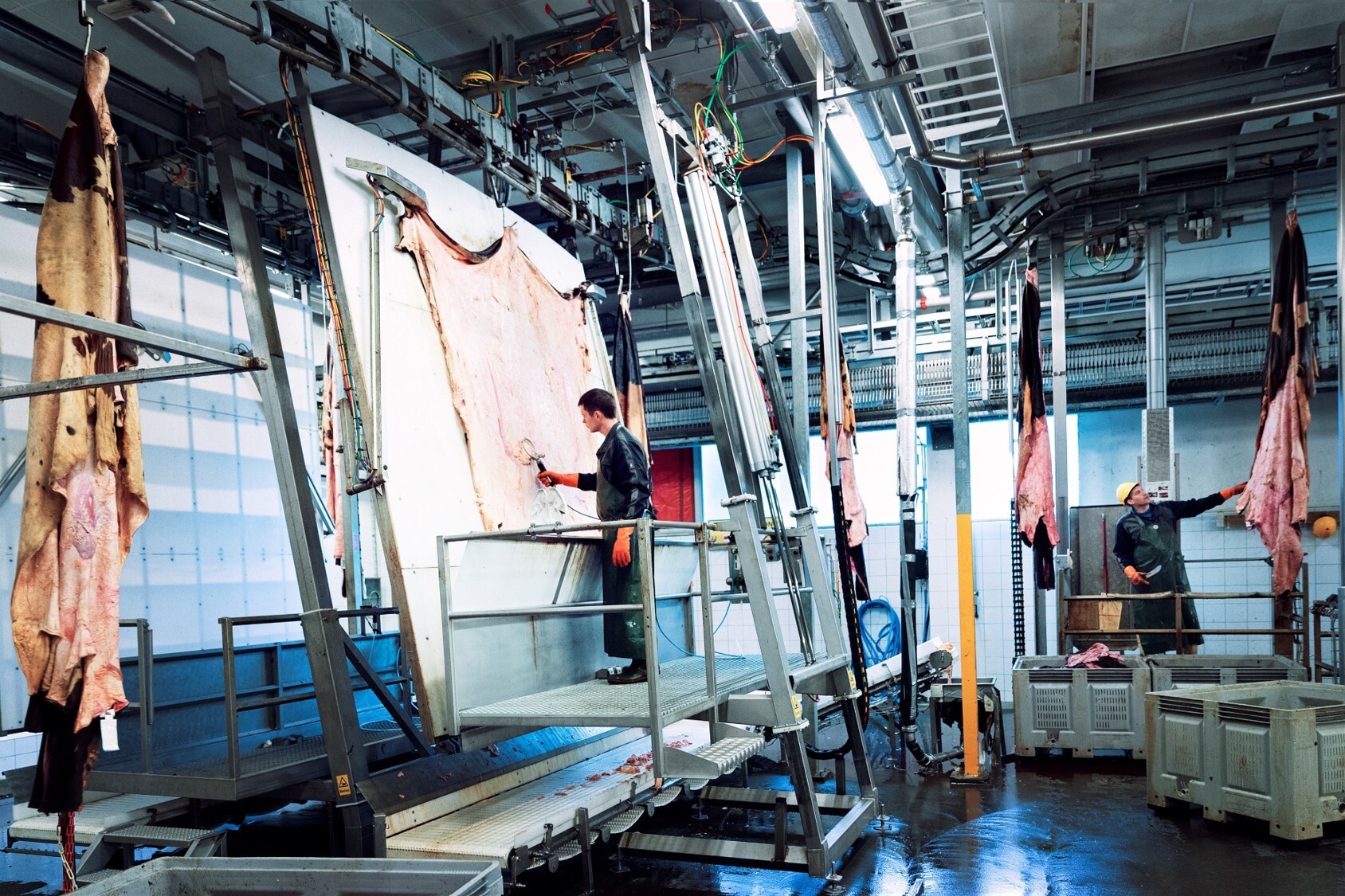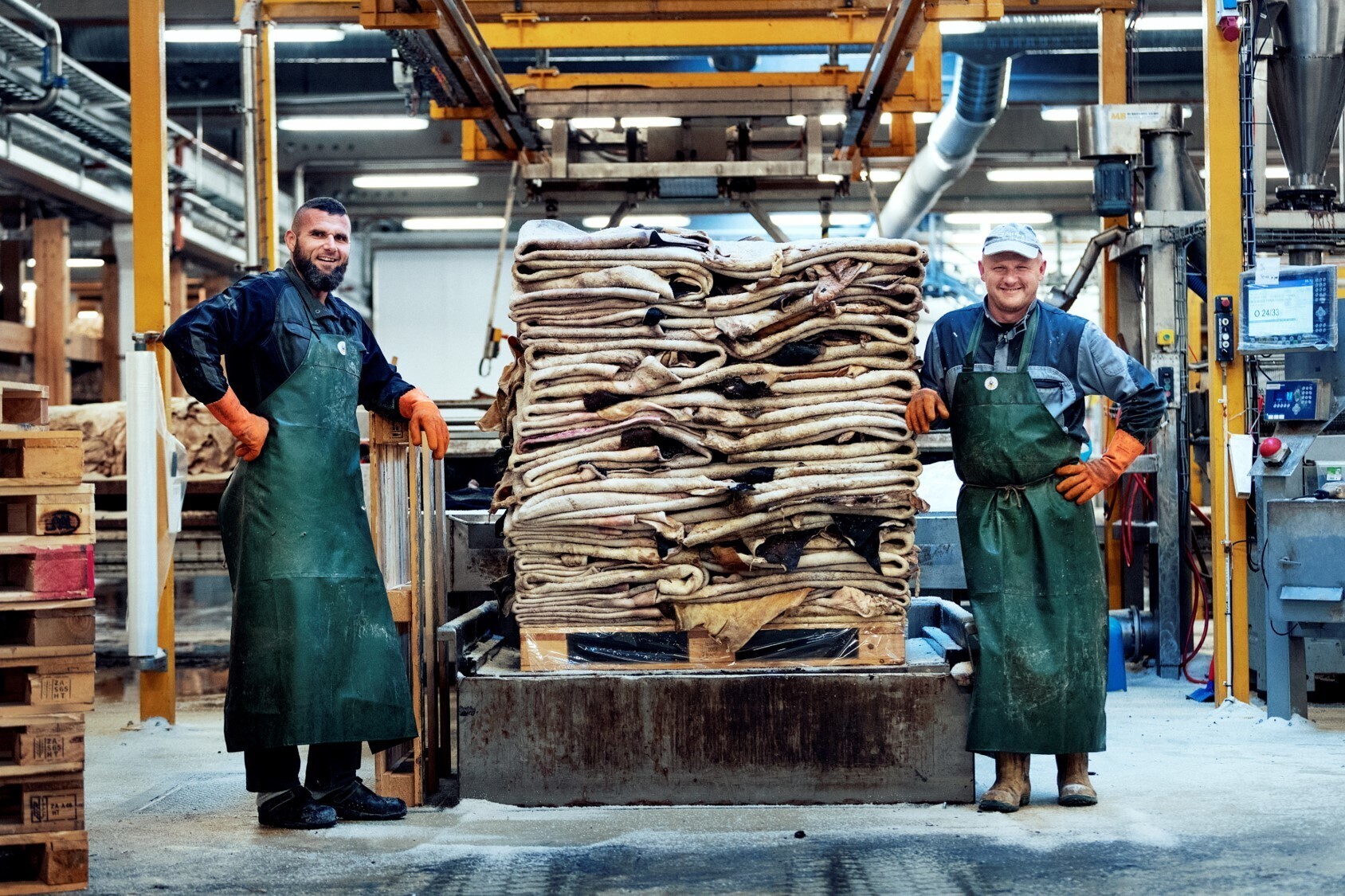Professional and modern refinement of our quality Scandinavian hides and skins
Photo: Sune Eriksen
To ensure that our customers receive quality products, significant investments have been made at the production facilities where our hides and skins are refined: Norilia's hide plant in Skjeberg, Norway, and Himmerlandskød's hide plant in Rødkjærsbro in mid-Jutland, Denmark. Shortly after pulling, hides are chilled to just above freezing. The hides remain continuously chilled until they reach the hide plant in Skjeberg. Here, hides are trimmed, graded, and, when relevant, salted. Our skins are also removed with a hide puller and immediately drum salted in the abattoir. Grading of skins takes place at Skjeberg.
Immediate chilling after pulling contributes to maintaining quality
All hides in Norway are machine pulled and cooled down immediately after skinning. The immediate chilling and mechanical pulling are some of the key factors contributing to ensuring the exceptional quality that characterizes Norwegian hides. The uninterrupted cooling from slaughter to delivery at Norilia Skjeberg provides the best starting point for further refinement at the processing facility.
Effective handling of Danish hides
All hides are machine pulled in Denmark as well. At Himmerlandskød's processing facility in Rødkjærsbro, the Danish hides are cooled down, graded, and sorted. The hides are packed in boxes before they are sent to Skjeberg for salting, or they are packed fresh in big bags for export directly to customers. The plant is newly built and has a modern production line for classification of hides, and a very effective chilling facility. Within a short time, the cattle hides are chilled to just above freezing. Customers buying fresh hides are ensured good quality at the same time as the environmental impact is reduced.
One of Europe's most modern hide refinement plants
Norilia's hide and skin processing facility at Skjeberg was opened in 2012. This facility is one of Europe's most modern hide and skin refinement facilities, where physically demanding labor is replaced or supported with technical solutions. Employees of the facility have a continuous focus on quality and development.
Hides are fat-trimmed and classified at Norilia Skjeberg before they go on an overhead conveyor to the chilling room. Hides that are sold fresh are packed straight from the chilling room and transported with chilled transport to our customers. Hides that are salted are taken from the chilling room, mechanically salted, and stored in draining storage for a minimum of 14 days. Afterwards, all excess salt is removed, and hides and skins are packed on pallets. Almost 99% of the salt is then recycled, contributing to a more sustainable process.
The majority of lamb, sheep, and goat skins arrive at Skjeberg within a few hectic months in autumn after sheep and lamb are brought home from the mountains and slaughter season begins. Skins are wet salted at the abattoir for maximum conservation. In Skjeberg, the skins are sorted and graded, then packed on pallets, ready to be shipped to customers.


Fat-trimming in Skjeberg
Photo: Sune Eriksen







 Fat-trimming in Skjeberg
Fat-trimming in Skjeberg
